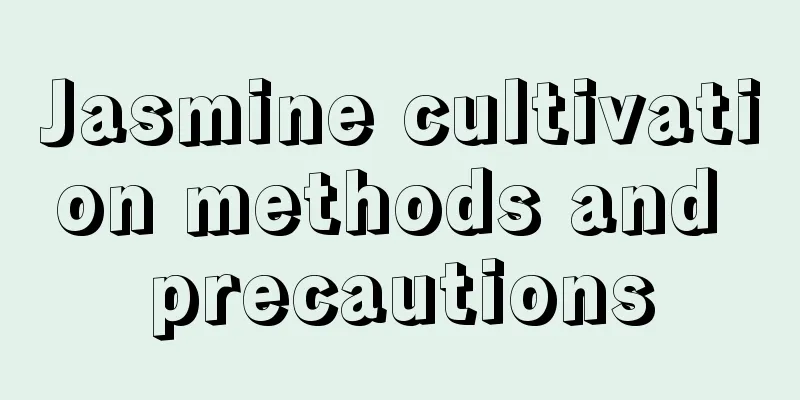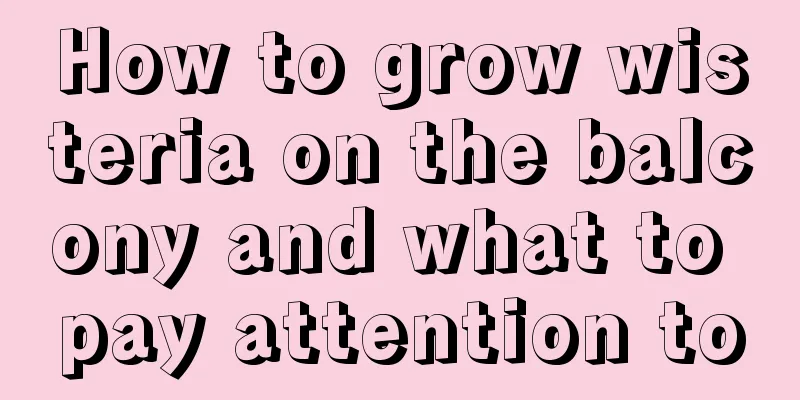Jasmine cultivation methods and precautions

1. TemperatureBecause jasmine is native to India, it prefers high temperatures, so you must take anti-cold measures in winter to prevent frostbite. 2. PruningJasmine is actually a vine plant, so when it is cultivated, there will be problems with individual branches growing too long, which looks abrupt on the plant and affects its appearance. We need to prune the jasmine to maintain a plump plant shape. This type of branch tends to grow more vigorously. When pruning it, do not simply cut it flush with other branches. It should be slightly concave and shorter than other branches. In this way, the branches that grow after the plant sprouts again will have a certain amount of growth space. The pruned branches can be used for cuttings. In an environment where the temperature is above 20 degrees, insert the section close to the cut of the branch into the soil. Provide suitable climatic conditions and it will take root and grow into a new plant. 3. WaterJasmine likes a humid environment, so it has high requirements for water and cannot be placed in a relatively dry environment. If the soil in the pot is too dry, the root system will be damaged. 4. LightingJasmine likes strong light. There is a saying among the people that "jasmine can't be killed by the sun". As long as it is placed in the sun during the growing season, it will grow well. If the plant is grown in a dark place for a long time, the branches will become thin and weak, and the branches will turn yellow, fall off, or become burnt and dry. 5. FertilizationJasmine flowers bloom a lot, so they consume a lot of nutrients. During the growth process of jasmine, thin compost should be added about once every half a month. Fertilizers can be selected from commonly used organic fertilizers, such as fermented bean cake water, compost, etc. You can also use slow-release fertilizers and compound fertilizers on the market. When applying fertilizer, follow the principle of "applying small amounts frequently" and do not apply too much fertilizer at one time, especially in winter and high temperature seasons. Fertilization will be more effective if it enters the growth period. 6. Pests and diseasesSometimes you will encounter red spider mites, and irregular small yellow dots will appear on the leaves. The yellow dots are relatively small, about the size of a pinhole. If you turn over the leaves, you can find white flocs, which are the residues of the red spider's silkening and peeling. Solution: We can wash the back of the leaves with water. If the problem is serious, we need to spray the entire plant with acaricide to kill the red spider. |
<<: Breeding methods and precautions of Zephyranthes
Recommend
The correct way to water green radish with beer How to water green radish with beer for better effect
Can beer be used to water green radish? Beer wate...
What is the reason for the jasmine seedlings to become stiff (how to deal with the jasmine seedlings that become stiff after repotting)
What to do if the jasmine seedlings are dead The ...
What are the cultivation methods and precautions of Brazilian wild peony?
Brazilian wild peony cultivation method Brazilian...
The green ivy looks like it has been painted green, and everyone praises it. The secret is... you can learn it in one go!
How to save the green radish at home when it turn...
When to plant jasmine
1. Sowing time The best time to sow jasmine is sp...
Planting technology and cultivation management of bergamot
Buddha's hand is an evergreen shrub or small ...
How to cultivate golden treasury in spring
1. Breeding methods 1. Repotting: You need to cho...
How to eat Huoshan Dendrobium
1. Porridge This kind of food requires fresh dend...
How to care for Phalaenopsis in pots? How to cultivate Phalaenopsis in pots
Phalaenopsis potted cultivation method 1. Light: ...
Is windmill jasmine poisonous?
1. What is Windmill Jasmine? It is what we often ...
The flowering time of lilac, the flower language of lilac
1. Flowering time Lilac is a very common plant th...
Camellia's water requirements
1. Watering frequency Camellia likes water during...
How long does it take for potatoes to sprout and emerge from the soil? The 5 stages and steps of potato planting
How long does it take for potatoes to sprout? The...
How to manage hydrangeas in winter?
Hydrangea , with its large flower balls and color...
What are the cultivation methods and precautions of African jasmine?
African jasmine cultivation method African jasmin...









